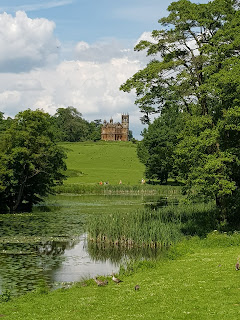Sir Harrold Hillier (of Hillier Nurseries and Garden
Centre fame) began developing these gardens back in 1953. As with many great
gardens they mature and improve with age. His specimen tree planting has left
us with some magnificent and unusual specimens to enjoy today.
The garden is famous for its seasonal interest. As we
are now into December, I headed straight for the Winter Gardens. I have found
that many of the winter gardens around the country have similar plants and planting combinations
but this was one of the best I have visited. The plants had been used in a very
clever way; contrasting to accentuate a specimen or working in harmony to
reveal a picturesque scene.
Ivy is a often overlooked as an invasive weed or worrying
wall invader but here it was used in an interesting and manageable way. I will
be borrowing this idea for one of my own design projects!
The often brown and muddy garden of winter can be
brightened up with splashes of colour. Here are a few of the
plants that I thought looked particularly lovely in these gardens in December.
Callicarpa bodinieri
Acer griseum / Paper Bark Maple
Betula albosinensis / Chinese Red Birch
Photinia davidiana / Chinese photinia
Cornus sanguinea / Bloody dogwood
Sarcococca confusa / Sweet box
You will smell this plant before you see it, a heavy sweet smell fills the air.
Euonymus hamiltonianus / Spindle Tree
When plants and trees stand bare during winter, the
structure and layout of the garden becomes visible and important. The long border may have lost its showy flowers but the layout
and hedges are impressive in their own right.
Sculpture and punctuation create focal points and allow
the eye to move from point to point around the space. These have been cleverly
achieved in this garden with a mix of man made artworks, specimen trees and a
mixture of the two.
Another tip that I picked up in this garden and will be sure to use in my own landscape creations was the pyramid Box hedging. The problem with normal hedging is that one side and the bottom of the hedge become shaded and produce less leaves. I loved this simple idea that will allow more light to the hedge sides and create a greener, thicker, healthier hedge.




























































